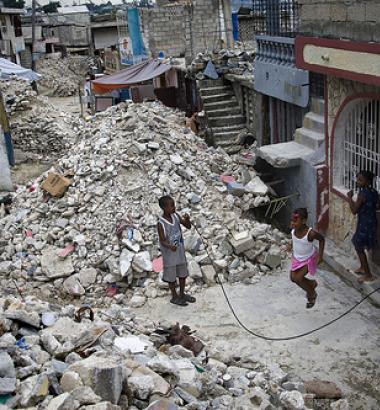Nine months after the horrific 2010 earthquake in Haiti, a cholera outbreak erupted. Almost half a million Haitians were stricken, and more than 6,500 died. A study by Harvard Medical School biomedical engineer Rumi Chunara and epidemiologists Jason R. Andrews and John S. Brownstein suggests that an unlikely set of media tools including Twitter can help public health workers anticipate and respond to disease outbreaks more effectively, particularly in countries with weak infrastructure such as Haiti.
The authors compared reports of cholera during the first 100 days of the Haitian outbreak from the Haitian Ministry of Health, Twitter, and healthmap.org, an online disease aggregator that draws from reports from news media and individuals. Even though Haiti is one of the poorest countries in the world, a significant portion of its people own cell phones, and thus have access to Twitter. During the 100 days the authors studied, more than 188,000 tweets with the word or tag “cholera” were sent. (Said one: “Sitting with a father who just lost his 7-year-old to cholera. Reality still has not hit.”) Healthmap.org registered almost 5,000 alerts about the Haitian cholera crisis.
In reviewing what happened, the authors found that the volume of mentions involving Haiti and cholera on Twitter and healthmap.org correlated well with the severity of the epidemic as it progressed. An increase in mentions corresponded with a spike in cases. But new media data were available much more quickly than the Haitian Ministry of Health’s numbers, which usually sat for two weeks before they were released to the public.
Chunara and colleagues conclude that new media tools can give public health workers an earlier start on predicting the size and spread of possible outbreaks, enabling them to respond more effectively. What is a time-killing medium for millions of people could be a lifesaver for many others.
Children jump rope amid rubble in Port-au-Prince, Haiti eight months after the January 2010 earthquake. Photo by United Nations Photo via flickr

